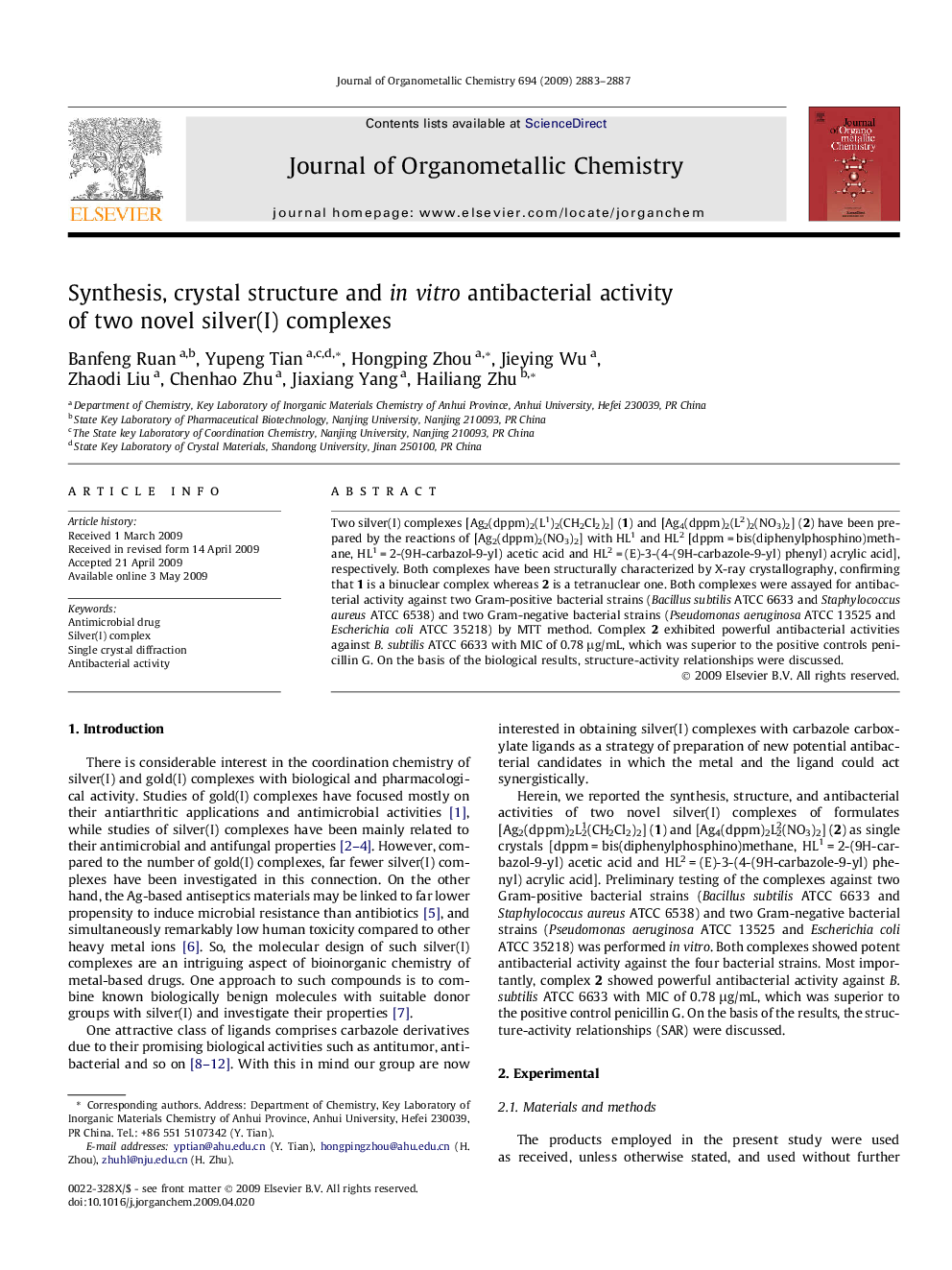| کد مقاله | کد نشریه | سال انتشار | مقاله انگلیسی | نسخه تمام متن |
|---|---|---|---|---|
| 1326369 | 977427 | 2009 | 5 صفحه PDF | دانلود رایگان |

Two silver(I) complexes [Ag2(dppm)2(L1)2(CH2Cl2)2] (1) and [Ag4(dppm)2(L2)2(NO3)2] (2) have been prepared by the reactions of [Ag2(dppm)2(NO3)2] with HL1 and HL2 [dppm = bis(diphenylphosphino)methane, HL1 = 2-(9H-carbazol-9-yl) acetic acid and HL2 = (E)-3-(4-(9H-carbazole-9-yl) phenyl) acrylic acid], respectively. Both complexes have been structurally characterized by X-ray crystallography, confirming that 1 is a binuclear complex whereas 2 is a tetranuclear one. Both complexes were assayed for antibacterial activity against two Gram-positive bacterial strains (Bacillus subtilis ATCC 6633 and Staphylococcus aureus ATCC 6538) and two Gram-negative bacterial strains (Pseudomonas aeruginosa ATCC 13525 and Escherichia coli ATCC 35218) by MTT method. Complex 2 exhibited powerful antibacterial activities against B. subtilis ATCC 6633 with MIC of 0.78 μg/mL, which was superior to the positive controls penicillin G. On the basis of the biological results, structure-activity relationships were discussed.
The antibacterial activity of two novel silver(I) complexes has been studied against two Gram-positive and two Gram-negative bacterial strains by MTT method, observing that complex 2 shows powerful antibacterial activity against Bacillus subtilis ATCC 6633 with MIC of 0.78 μg/mL, which was superior to the positive control penicillin G.Figure optionsDownload as PowerPoint slide
Journal: Journal of Organometallic Chemistry - Volume 694, Issue 18, 15 August 2009, Pages 2883–2887